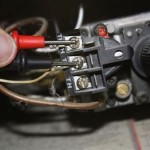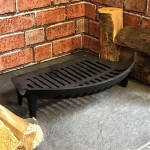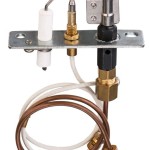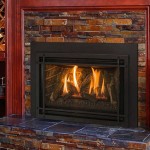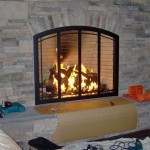How To Build A Fireplace Mantel: A Comprehensive Guide
A fireplace mantel serves as a focal point in any room, offering both aesthetic appeal and a functional surface for displaying decorative items. Building a fireplace mantel is a project that can be tackled by both experienced woodworkers and motivated DIY enthusiasts. This article provides a comprehensive guide to constructing a fireplace mantel, covering design considerations, material selection, step-by-step instructions, and essential safety precautions.
Before embarking on the construction process, it is crucial to thoroughly understand the specific requirements and safety regulations related to fireplace mantels. Building codes often mandate minimum clearances between the mantel and the fireplace opening to prevent fire hazards. Consult local building codes and regulations to ensure compliance. Furthermore, it is advisable to have the project reviewed by a qualified building inspector or contractor before commencing construction.
Planning and Design
The first step in building a fireplace mantel is meticulous planning and design. This phase involves determining the desired style, dimensions, and materials. Consider the overall aesthetic of the room and the existing fireplace surround when choosing a mantel design. Styles range from traditional and ornate to modern and minimalist. Research different designs to find inspiration and determine which style best complements the room's architecture and personal preferences.
Accurate measurements are paramount. Measure the width of the fireplace opening, the height from the floor to the top of the fireplace surround, and the desired depth of the mantel. These measurements will dictate the overall dimensions of the mantel and ensure a proper fit. Create a detailed sketch or blueprint of the mantel, including all dimensions and construction details. This blueprint will serve as a guide throughout the building process.
Material selection significantly influences the mantel's appearance and durability. Common materials include wood, stone, brick, and metal. Wood is a popular choice due to its versatility, affordability, and ease of workability. Consider different wood species, such as pine, oak, maple, or cherry, each offering unique grain patterns and characteristics. Stone and brick mantels provide a more rustic and substantial look, while metal mantels offer a sleek and contemporary aesthetic. Select materials that complement the room's style and provide the desired level of durability.
Once the design and materials are finalized, create a detailed materials list and cutting list. The materials list should include all necessary lumber, hardware, adhesives, and finishing products. The cutting list specifies the exact dimensions of each piece of lumber required for the project. Having these lists prepared in advance will streamline the building process and minimize errors.
Construction Process
The construction process begins with cutting the lumber according to the cutting list. Use a circular saw, miter saw, or table saw to accurately cut each piece to the specified dimensions. Ensure that all cuts are square and clean to facilitate proper assembly. After cutting the lumber, sand all surfaces smooth using progressively finer grits of sandpaper. This will remove any rough edges or imperfections and prepare the wood for finishing.
Assemble the mantel components according to the design blueprint. Use wood glue and screws to securely join the pieces together. For added strength, consider using pocket hole joinery or mortise and tenon joints. Clamp the assembled components together until the glue has fully cured. This will ensure a strong and durable bond. Check frequently for squareness and alignment during the assembly process.
Depending on the mantel design, additional features may be incorporated, such as decorative molding, corbels, or shelves. Attach these features using wood glue and small nails or screws. Pay close attention to detail when adding these elements to ensure a professional and visually appealing result. Sand all surfaces smooth after adding decorative features to blend them seamlessly with the rest of the mantel.
Before installing the mantel, apply a finish to protect the wood and enhance its natural beauty. Options include stain, paint, varnish, or polyurethane. Choose a finish that complements the room's décor and provides the desired level of protection. Apply multiple coats of finish, allowing each coat to dry thoroughly before applying the next. Sand lightly between coats to create a smooth and even surface.
Installation and Safety
Before installing the mantel, ensure that the fireplace surround is clean and free of debris. Locate the studs in the wall behind the fireplace. These studs will provide a secure anchor for the mantel. Use a stud finder to accurately locate the studs and mark their positions on the wall.
Position the mantel against the wall, aligning it with the fireplace surround. Ensure that the mantel is level and centered. Use a level to check the horizontal and vertical alignment. Once the mantel is properly positioned, attach it to the wall using screws that are long enough to penetrate the studs. Predrill pilot holes to prevent the wood from splitting. Use shims to ensure that the mantel is perfectly level and flush against the wall.
Verify that the installed mantel meets all local building codes and regulations regarding clearances from the fireplace opening. Maintain the minimum required distance to prevent fire hazards. If necessary, install a fire-resistant shield behind the mantel to protect it from excessive heat. Regularly inspect the mantel for any signs of damage or deterioration and address any issues promptly.
After the mantel is securely installed, conceal the screw heads with wood filler or decorative plugs. Sand the filler smooth and touch up the finish to match the surrounding area. Add decorative items to the mantel to personalize the space and enhance its aesthetic appeal. Consider displaying family photos, artwork, candles, or seasonal decorations.
Maintaining a safe distance between combustible materials and the fireplace opening is paramount. Never place flammable items, such as paper, fabric, or dried flowers, directly on or near the mantel. Educate all household members about fire safety precautions and the importance of maintaining a safe distance from the fireplace. Install a smoke detector in the room to provide early warning of a fire. Have the fireplace and chimney regularly inspected and cleaned by a qualified professional.
Building a fireplace mantel requires careful planning, precise execution, and adherence to safety regulations. By following the steps outlined in this guide, it is possible to create a beautiful and functional fireplace mantel that enhances the ambiance of any room. Remember to prioritize safety throughout the entire process and consult with professionals when needed.

How To Make An Easy Diy Fireplace Mantel Sprucing Up Mamahood

Easy Diy Fireplace Mantel Tutorial Jessica Welling Interiors

Diy Fireplace Mantel Designatedspacedesign Com

How To Build A Fireplace Mantel Easy Diy Blossoming Life

Build A Fireplace Mantel

Easy Fireplace Mantel Diy

Diy Fireplace Mantel The Idea Room

How To Build A Faux Fireplace Mantel And Surround The Home Depot

How To Build A Diy Fireplace Mantel Fixthisbuildthat

Diy Rustic Fireplace Mantel Domestically Speaking

